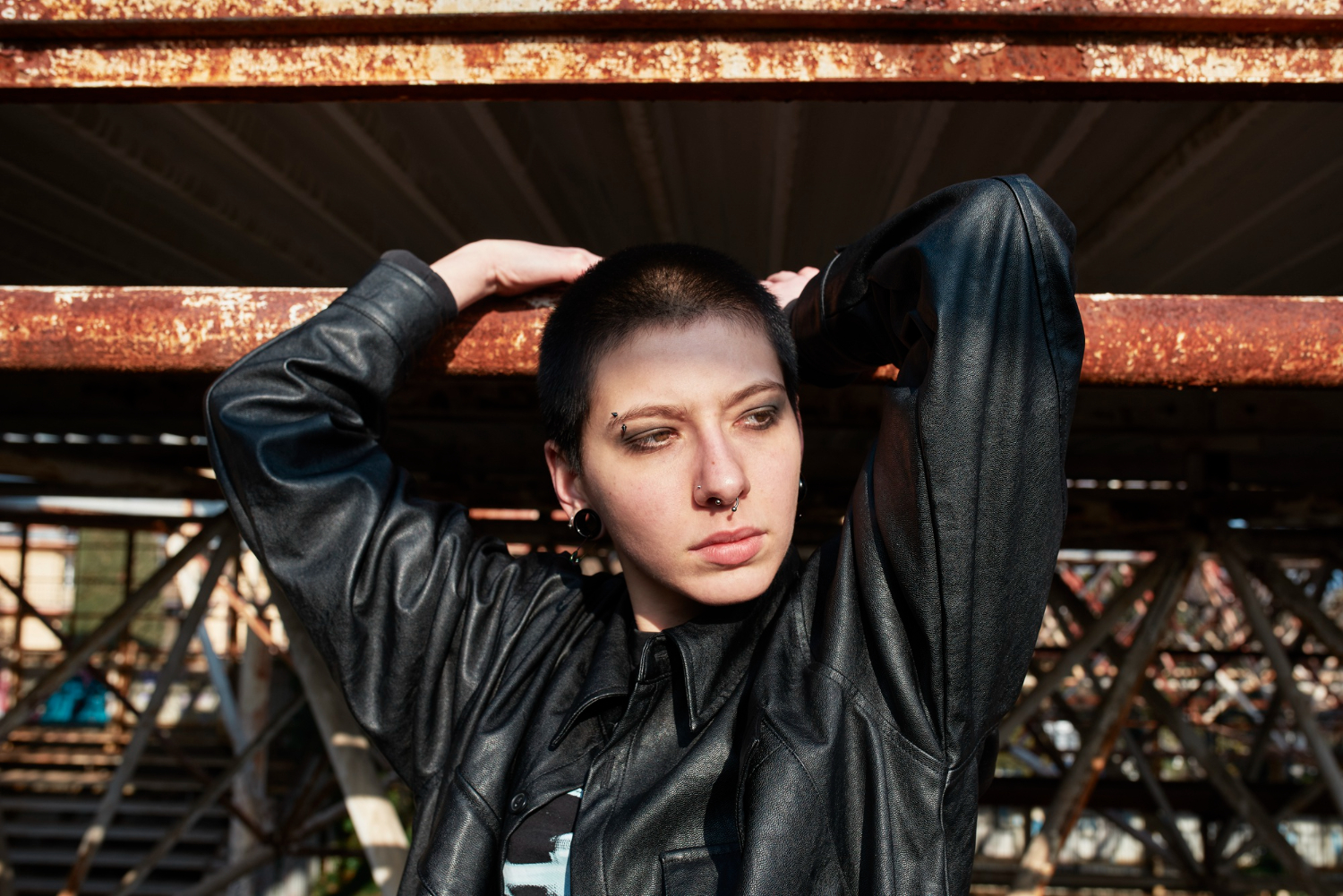A model’s ability to adapt to different environments is one of the most powerful tools in their career. Whether you’re standing under the golden hour sun or surrounded by lighting rigs in a high-tech studio, how you pose needs to complement your surroundings, the concept of the shoot, and the final image the photographer wants to create.
Posing for outdoor vs. studio shoots requires more than a simple shift in stance , it calls for an understanding of how lighting, space, mood, and context work together. I’ve had the chance to shoot in both environments and I can confidently say that mastering the differences will elevate your modeling game.
Posing with Natural Light
One of the most defining features of outdoor shoots is the light. Natural light adds softness, depth, and realism to images. But it’s also unpredictable , changing from moment to moment depending on the time of day, weather, and location.
When posing outdoors, I’ve learned to be hyper-aware of where the sun is. Facing the light head-on can sometimes cause squinting, while backlighting may lead to silhouettes unless balanced with a reflector. My go-to tactic is to angle my face slightly to the side, letting the light skim across my cheekbones. It creates a lovely sculpted effect.
Outdoor posing often benefits from more relaxed, natural expressions. Think soft smiles, gentle movement, or gazing into the distance. There’s a romanticism to being in nature, and the body language should match , elongated lines, flowing hand gestures, and movement that feels unforced.
Dealing with Outdoor Challenges
Outdoor environments can be inspiring, but they come with their own set of obstacles. Wind can mess with your hair, uneven terrain can impact your footing, and distracting elements in the background can pull focus from your pose.
I always bring flexible footwear when I know a shoot involves grass, sand, or rocky surfaces. Posing confidently means feeling stable, and wobbling on stilettos doesn’t help. When wind picks up, I try to work with it , letting my hair or garments flow naturally, giving the image dynamic energy.
One trick I’ve learned is to stay in motion. Instead of holding a stiff pose for too long, I subtly shift weight from one leg to another, move my arms slightly, or play with my expression. This movement translates beautifully in outdoor photography, where the environment is already dynamic.
The Intimacy of Studio Posing
Studio shoots are all about control. The lighting is deliberate, the background is clean or curated, and distractions are minimized. This gives the model an opportunity to showcase more subtle, refined expressions and body positioning.
In studio environments, I tend to go for precise, deliberate poses. Since the lighting setup can emphasize every angle, even small changes in posture can dramatically affect the final image. I pay close attention to the placement of my hands, the tilt of my head, and the line of my neck and spine.
The quiet, focused nature of studio work also means you can dive deeper into character. Whether it’s high fashion, beauty, or editorial, the camera captures everything , so I tap into emotion through my eyes and micro-expressions.
Working with Artificial Light
Studio lighting can be both your best friend and your biggest challenge. It flatters when used correctly, but it can also expose flaws in posing if you’re not careful. One thing that helps me is getting a feel for the lighting setup before I start.
If the key light is coming from my right, I know to highlight that side of my face or body. If there’s a fill light softening shadows, I’ll use that side for subtle posing. Sometimes, studio lights are harsh and dramatic , in which case, strong jawlines, confident posture, and edgy hand placement work better.
In some studio setups, I’ve had to hold poses for longer durations so that the lighting can be adjusted. This requires stamina and awareness. Stretching beforehand and being mentally prepared to hold a position goes a long way in avoiding stiffness or strain.
Energy and Mood: Outdoor Freedom vs. Studio Precision
One of the things I love about outdoor shoots is the freedom to move. There’s a certain looseness that encourages more dynamic, wide-reaching poses. You can jump, twirl, walk, run, or even recline on the ground. These poses often look more authentic because the environment supports them.
Studio shoots, on the other hand, often demand perfection. You’re framed tightly, sometimes just from the waist up, and each inch counts. In this setting, poses that look clean, symmetrical, and intentional stand out. It’s less about spontaneity and more about precision.
When thinking about posing for outdoor vs. studio shoots, I adjust my energy accordingly. Outside, I radiate warmth, movement, and connection to the environment. In a studio, I aim for elegance, control, and emotional depth. Knowing how to shift that internal tone makes a huge difference in the final result.
Props and Environment Interaction
In outdoor shoots, I often get to interact with the environment , leaning on trees, sitting on benches, or walking along a trail. These natural props add realism to a pose and give my hands something to do. I’ll let my fingers brush through tall grass or pick up a flower to give a sense of narrative.
In studio sessions, props are more curated. Chairs, stools, fashion accessories, or abstract items may be used to support a concept. I once had to pose with a giant feathered fan and a minimalist metal cube , both required me to think creatively about posture and hand placement.
Whenever props are involved, I ask myself how they relate to the overall emotion of the image. Whether outdoors or indoors, a prop should feel like a natural extension of the story, not something forced.
Wardrobe Adjustments Based on Setting
Another factor in posing for outdoor vs. studio shoots is wardrobe. In natural environments, garments with movement , like flowing dresses or draped fabrics , look stunning. I try to emphasize their shape by moving slightly, catching the wind, or playing with the fabric.
Studio clothes are usually more tailored or high-fashion focused. They require sharper, more angular poses to highlight the construction. If I’m wearing a structured blazer or couture piece, I use strong posture and arm positioning to bring out the details.
Weather also plays a role. In hot outdoor settings, I avoid poses that make me look sweaty or uncomfortable. In colder shoots, I pose quickly and efficiently to avoid visible shivering or stiffness in photos.
Facial Expressions for Both Settings
Outdoor portraits often benefit from open, relaxed expressions. A soft gaze, a playful smirk, or a contemplative look works well in natural light. I find it helps to engage with the scenery , looking off into the horizon or reacting naturally to elements like wind or sunlight.
In studios, the expression tends to be more curated. Photographers might ask for intensity, mystery, or specific emotions. Because the lighting and framing are close-up, subtle movements of my eyebrows, eyes, or lips can make a big impact. Practicing in the mirror helps me control these micro-expressions.
Tips to Prepare for Both Types of Shoots
- Know your location – Whether it’s a forest or a white backdrop, familiarize yourself with the setting so you can pre-visualize poses.
- Stretch and warm up – Regardless of location, preparing your body ensures flexibility, better posture, and comfort.
- Ask about the lighting – Get details on whether it’s natural light, golden hour, softboxes, or ring lights , this influences your posing angles.
- Practice poses in advance – Review inspiration boards or mood boards and rehearse different postures that match the theme.
- Hydrate and rest – Looking fresh and feeling energetic impacts your ability to hold poses and deliver strong expressions.
Personal Takeaways from Both Styles
Some of my favorite portfolio images have come from outdoor shoots where the background added dimension to my pose. Others came from studio sessions where I was able to showcase fine-tuned angles and a sense of character.
In my experience, posing for outdoor vs. studio shoots is not about choosing which one is better , it’s about being versatile. The more I’ve modeled, the more I’ve seen how each environment enhances certain types of expressions, styling, and posing.
Working outdoors pushes me to connect with space and nature, to think on my feet and move with instinct. Studio shoots teach me discipline, control, and the power of detail. And the magic happens when I blend lessons from both , using the flow of outdoor movement with the focus of studio energy.
Conclusion
Whether you’re just starting out or refining your craft, knowing how to adjust your body language, expressions, and mindset for different environments is key. Posing for outdoor vs. studio shoots involves more than standing still and smiling , it’s about creating a visual story that aligns with lighting, space, and emotion.
Mastering this contrast doesn’t happen overnight, but the more you shoot in both environments, the stronger your instincts become. Each setting teaches something unique. And when you learn to embrace them both, you open up endless opportunities for compelling, professional, and unforgettable modeling images.

